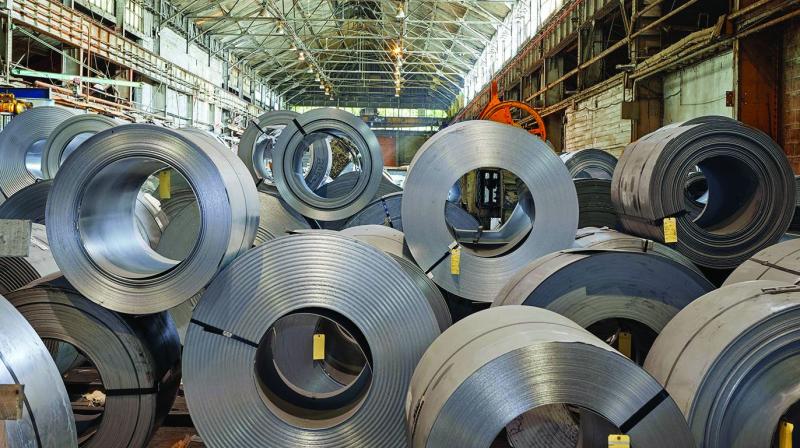Steel consumption set for slowest growth in 3 years

Mumbai: Demand for steel could grow at the slowest pace in three years as an economic slowdown in the global industry's bright spot deepens.
Steel consumption is likely to increase by less than 6 per cent this fiscal year, according to Icra, the local arm of Moody's Investors Service. That would make it the slowest pace since a 3.1 per cent increase in the year ended March 2017.
"Our earlier view was that demand should grow at 6 per cent to 7 per cent," Jayanta Roy, a Senior Vice President at Icra, said in an interview.
"A growth of 7 per cent would be out of line with the current situation now and even 6 per cent in today's environment would be optimistic."
Steel companies are taking a battering this year. Tata Steel's first-quarter profit slumped to the lowest in more than two years and rival JSW Steel's earnings fell by more than half as a crisis in the South Asian country's shadow banking sector fueled a cash crunch and economic growth slowed to a five-year low.
The S&P BSE Metal Index has also plunged about 30 per cent so far this year, the biggest loser among 19 sector indexes on the Bombay Stock Exchange, as high-frequency data signal a worsening slowdown in the economy, with car sales in July dropping the most in almost two decades and infrastructure sector output in June growing at the slowest pace in more than four years.
Still, consumption is likely to outpace global growth, which was forecast to increase 1.3 per cent by the World Steel Association in 2019. The global outlook is turning increasingly bearish with ArcelorMittal, the world's biggest steel producer, reporting earlier this month that demand could be even weaker than previously expected, while Baoshan Iron & Steel forecast weak demand in the world's second-largest economy will continue this half.
Steel consumption in the second biggest producer rose 7.5 per cent and 7.9 per cent in the last two years, outpacing a 2.1 per cent to 5 per cent growth globally, bolstered by Prime Minister Narendra Modi's push to build the nation's infrastructure. Steel demand totalled 97.5 million tonnes last financial year, jumping nearly 32 per cent in five years, steel ministry data shows.
Fresh capital expenditure from the government is critical for demand growth as private spending on projects is low, and construction and infrastructure remain the most important drivers of steel consumption, Roy said.
Finance Minister Nirmala Sitharaman announced a number of measures on Friday to help re-ignite the economy focusing on steps to spur foreign funds, allowing concessions on vehicle purchases and lending. Economists, finance leaders, industry executives and local media raised questions about the effectiveness of the measures amid lack of any major fiscal support.
— Bloomberg

